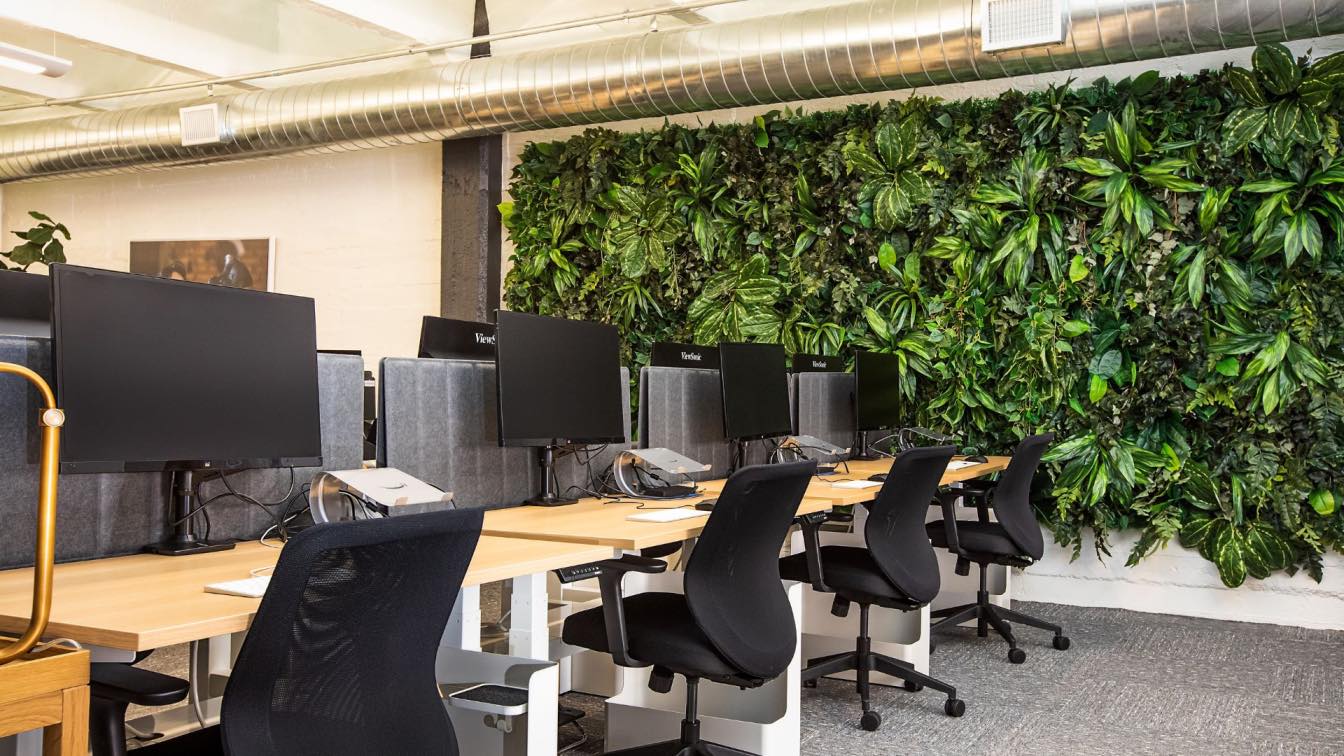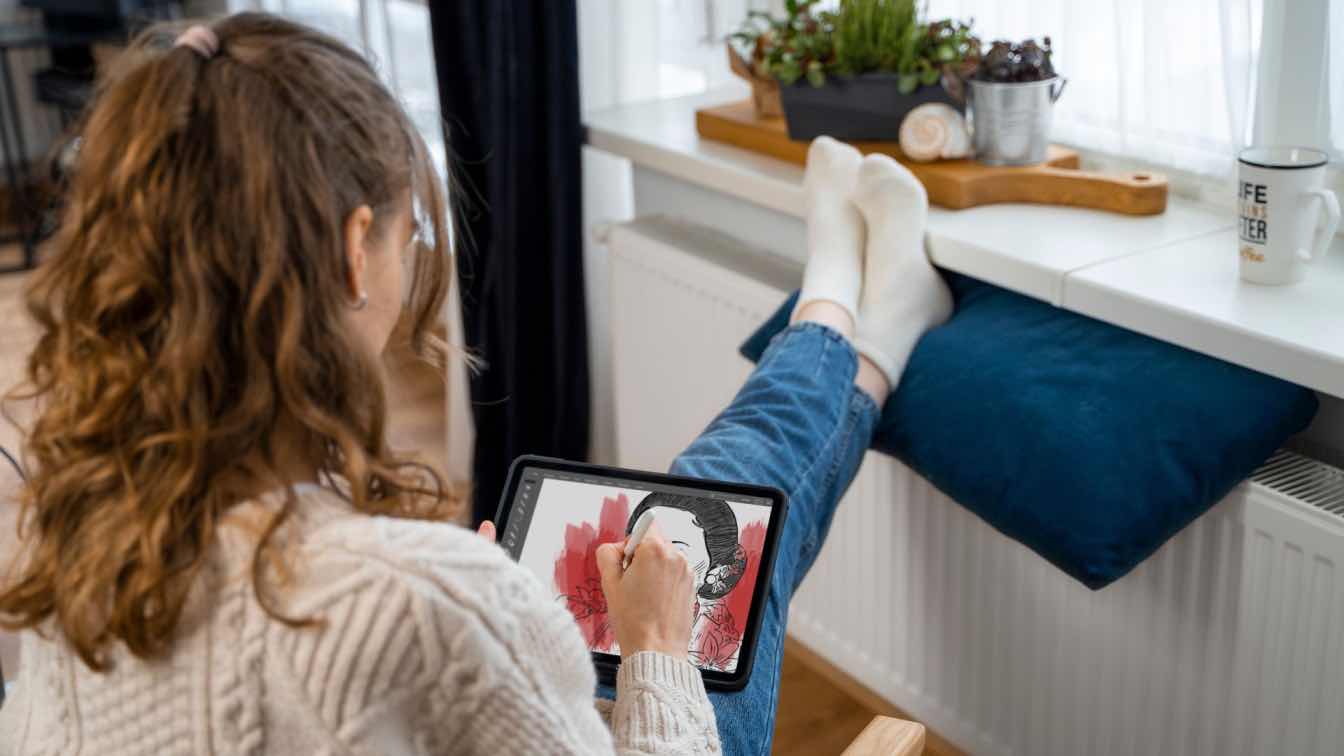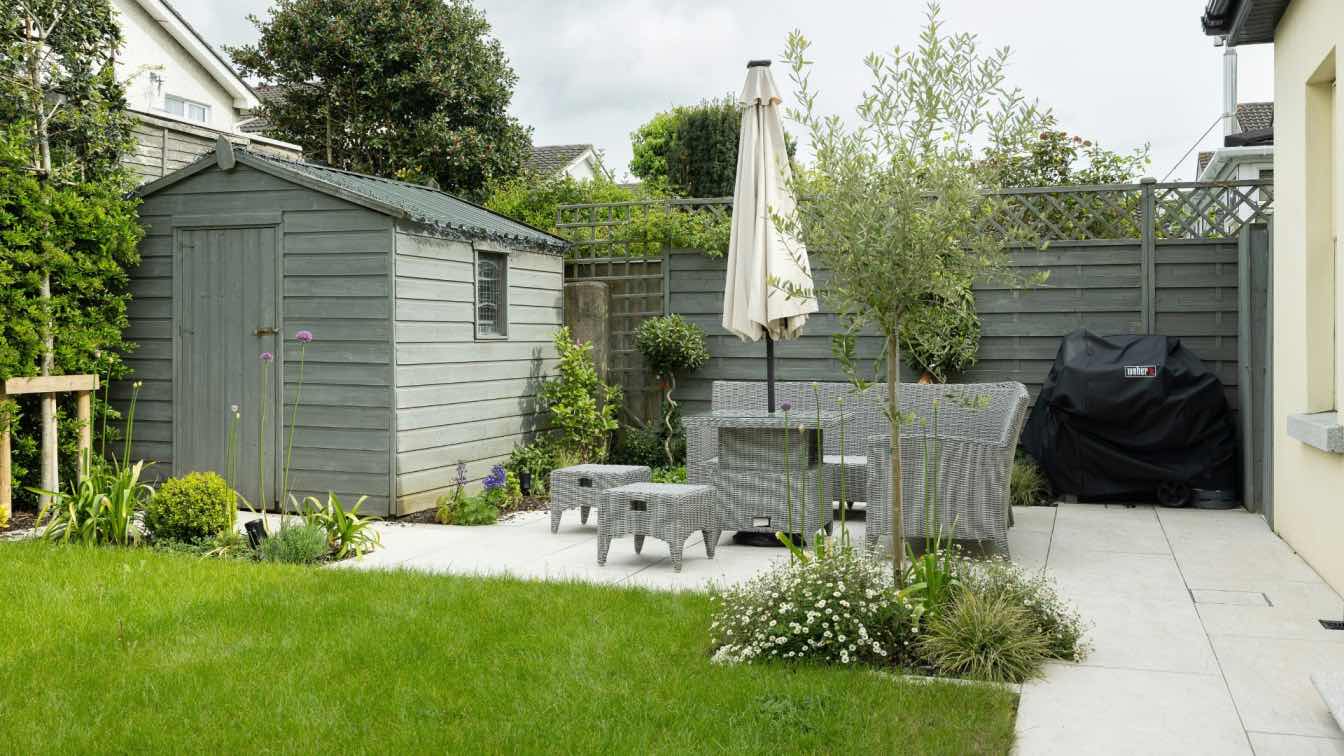Commercial office design is in a state of perpetual flux these days, with fresh trends continuously emerging to meet the changing needs of employees and businesses. From sustainability to smart technology, these trends are transforming the way we work and shaping the future of commercial office design.
Biophilic Design: Nature's Prescription for a Healthy Office
Biophilic design isn't anything new exactly, but its popularity in commercial office design has been red hot as more and more companies realize the benefits. Conceptually, it's all about bringing the outside in - nature specifically, of course (car fumes and sidewalk chewing gum are not invited). By merging natural elements into office spaces, the environment is thought to become more conducive to calm and ease, as we innately connect with nature and tend to feel more grounded. In addition to vibrant living walls, natural light, and views to the great outdoors, biophilic design can also include natural material elements such as wood, stone, and water features for enhanced tranquility.
Research shows that biophilic design can have a significant impact on employee well-being and productivity; to the tune of around 20% improvement, according to recent studies. Exposure to natural light and outdoor views alone can help to lift our mood, reduce stress, and even improve sleep quality. Natural materials, like wood and stone, are also excellent for creating a warm, comforting environment, boosting productivity.
Sustainability: Beyond a Mere Trend
Sustainability has overtaken the term ‘trend’ and is now becoming part of the furniture, so to speak. Green buildings are fast-becoming the norm; with the increasing awareness of climate change, it’s really (and finally) starting to sink in that companies have an ethical responsibility to reduce their carbon footprint. We’re seeing more and more green buildings being constructed; from solar panels to rainwater harvesting systems, sustainable features are becoming standard in commercial office design.
Waste Not, Want Not: The Circular Economy
The circular economy is a concept in which waste is minimized by creating a closed-loop system. This means that everything from the design of the building to the materials used to construct it, are done so in a way that minimizes waste and maximizes reuse. The amount of waste that becomes a byproduct of traditional practices is staggering, and embracing a circular economy in most industries is vital if we are to address the issue head-on.
Smart is the New Black
Gone are the days of manually adjusting the thermostat or turning off the lights, and thank goodness, as these tasks are incredibly boring and labor-intensive, right? Well, no, but smart tech is the new norm and it does far more fancy stuff than simply replacing menial tasks. Smart technology is revolutionizing the way we interact with our environment; from voice-activated assistants to panoramic security cameras, smart tech is making our lives dramatically more efficient. Smart office trends are firing on all cylinders and there's no slowing down in sight for the foreseeable future - the gadgetry is just too good!
Breaking the Mold: Opening Office Space Right Up
Open-plan offices have been popular for a while now, but they’re not without their faults; trying to concentrate in a noisy, distracting environment is painful for many. That’s why we’re seeing a shift towards more flexible, adaptable spaces; think movable walls and furniture, soundproof pods, and designated quiet zones. This trend is all about creating a dynamic, functional space that is conducive to all manner of working styles.
Say What?
Sound absorption solutions are critical in commercial office design, especially in open-plan offices buzzing with busyness. Acoustic ceiling and wall panels, acoustic partitions, appropriate flooring, and even niche furniture designs can all help to absorb sound and minimize overall noise levels, creating a more peaceful, comfortable working environment. By incorporating these solutions, companies can enhance employee satisfaction and retention, promote a healthy work-life balance, and boost productivity. Commercial office designs that encourage collaboration and creativity are fantastic, but productivity sometimes relies upon effective noise control, and in this sense, balance is key.
The ‘Third Place’ Taking Center Stage
The ‘third place’ is a term used to describe a space that’s neither home nor work; a place where you can go (where everybody knows your name and troubles are all the same?) to relax, socialize, and be uber-productive. More and more commercial office spaces are leaning towards incorporating elements of this ‘third place’ concept - think coffee shops, lounges, and communal kitchens. Connection is powerful, and facilitating more of it can transform the energy and productivity of a workspace.
Out With the Old, in With the Adaptable
As we've seen, commercial office design is constantly evolving, with new trends emerging and shaping the way we work - flexible, adaptable, smarter not harder, these are the fundamental principles upon which modern office design is now being envisioned. Traditional office designs had their day, and there is no denying that we are witnessing a new era in office space functionality with exciting new technologies and innovations bubbling up left, right and center - watch this (office) space.






